Are you generating leads for your business? Getting the competitive edge can be tricky, so we pulled together 35 lead generation statistics for 2023 that will help you refine your strategy.
Generating leads isn’t easy.
And even more difficult is generating high-quality leads.
In fact, we found that 37% of marketers found generating high-quality leads to be one of their biggest challenges.
As customer journeys get longer, ad budgets increase and users opt for dark channels to engage with your content, marketers struggle to know where their time is best spent.
We’re all in the same boat here, so we decided to do some investigation. We asked our community of marketers some key questions to find lead generation statistics that could help you improve your marketing.
We’ve split our lead generation stats by category so we’ll cover:
So, let’s get stuck in.
This data is pulled from a variety of sources, including a survey of over 200 marketers on their key reporting and attribution challenges.
These lead generation statistics will help you identify new opportunities for leads based on what other marketers are currently doing.
Let’s get started.
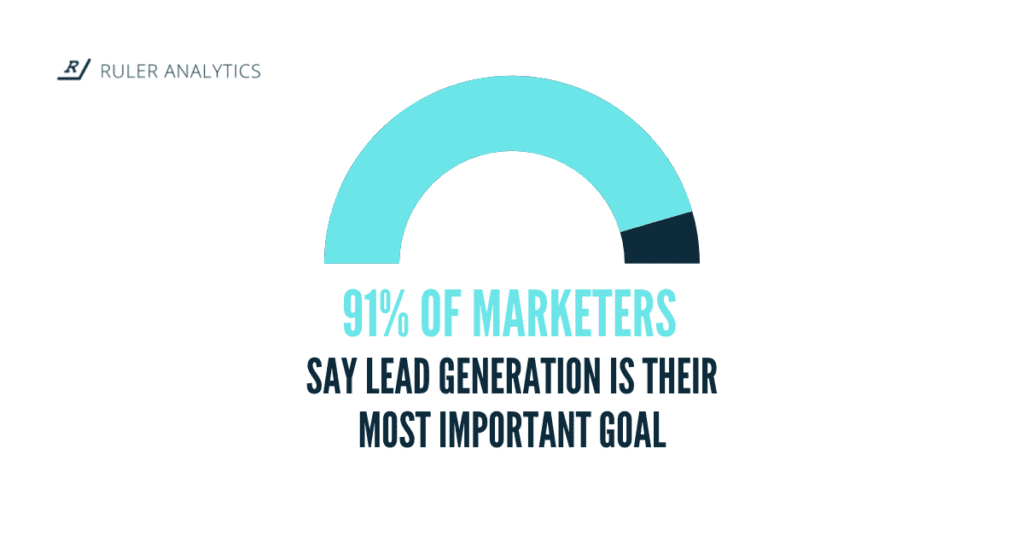
That’s a huge percentage of B2B marketers working toward the same goal; to drive high-quality leads that ultimately result in new business.
And with increased competition comes higher budgets, more channels used, more content being shared. All of that combined means a lot more data for marketers to sift through and make sense of. Marketing attribution can help you make sense of that data. (Source: Ruler Analytics)
💡 Pro Tip
Marketing attribution can help you make sense of this data as it automatically connects closed revenue back to the influencing marketing channels, campaigns and even keywords. Book a demo and learn why you need an attribution tool like Ruler.
Marketers are putting their money where their mouth is. Whether this is through paid advertising, outbound tools or elsewhere, it’s clear that lead generation is a key objective to businesses.
Lead generation is so important that only 34% spend less than half of their budget on it. (Source: BrightTALK)
Related: Cheatsheet to lead nurturing
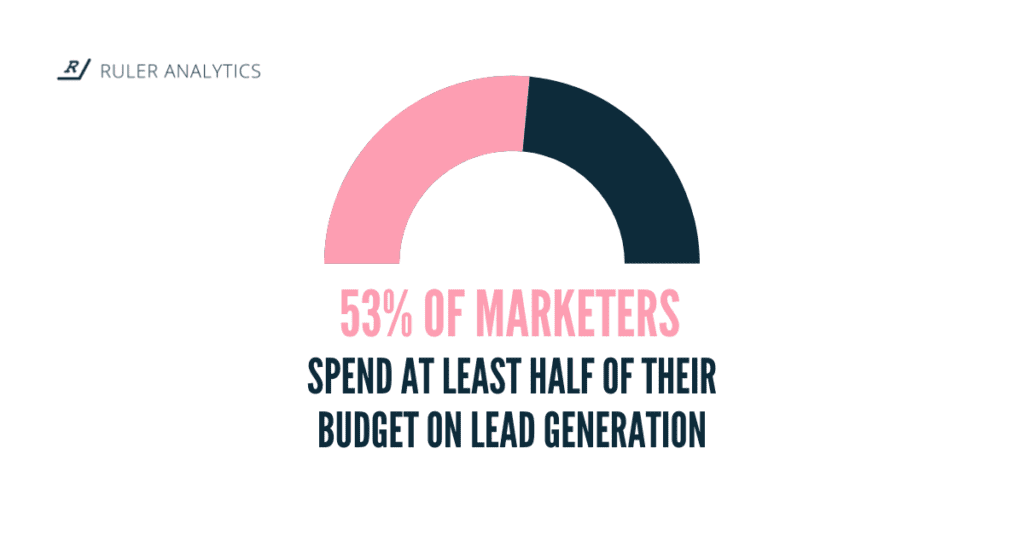
Automation is big right now. HubSpot, one of the leaders in the automation space, has over 110,000 users. And that’s one of the more expensive options too!
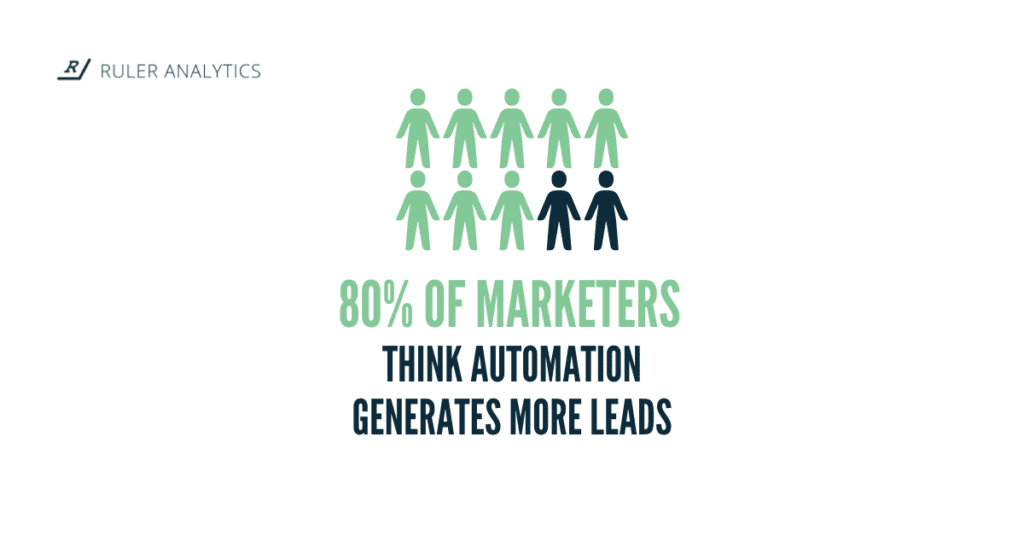
According to the source, marketers drive as much as 451% more leads than those who don’t use automation. And, even better news, automation helps close leads too.
The report found that 77% of marketers using automation software convert more leads than those that don’t use an automation tool. (Source: APSIS)
We surveyed marketers on B2B lead generation to understand which conversion points they used to drive new leads.
Here’s what we found:
This includes contact us forms, demo requests forms, as well as forms used for gated content.
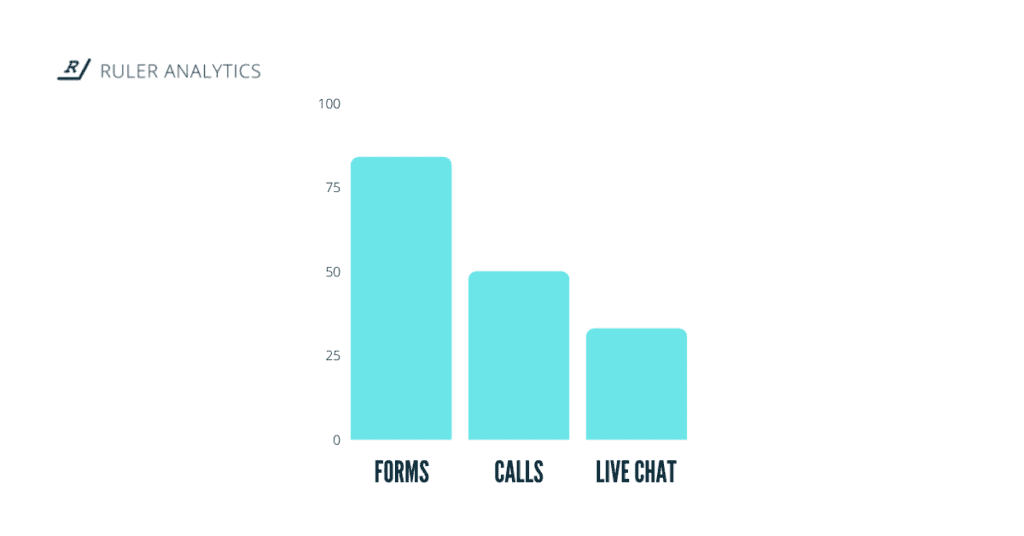
For B2B marketers, this is a key way to drive leads from your site content. Adopting a strong SEO technique can make or break your lead generation. However, we also found that 36% of marketers who use form submissions as a conversion tool struggle to track them.
So, while you can track lead volume for forms in Google Analytics with some simple tracking, linking a lead to closed revenue and back to their marketing history isn’t quite as easy. (Source: Ruler Analytics)
Related: Read key B2B marketing tools you need to try, including content marketing and SEO tools.
Inbound calls are another key way marketers can drive users to convert. By placing a phone number on your website or offline marketing literature, you can drive users to call you directly.
While 50% of marketers use phone calls to drive leads, we found that 62% of those struggled to track them.
Call tracking software like ours could help alleviate that gap, and help you link offline sales back to online marketing campaigns. (Source: Ruler Analytics)
Similarly for live chat, we found that 53% of marketers using the conversation tool struggled to track it. (Source: Ruler Analytics)
This is where the difficulty between lead volume and lead tracking comes into play.
Lead volume is how you track new form submissions, inbound calls, or live chat sessions. Lead tracking is collating data between apps to understand where a lead has come from, and if it goes on to close into a sale.
With each conversion point, marketers are struggling to get a clear overview of their impact.
Related: Learn what other facets of reporting and attribution marketers are struggling with in 2023.
As part of a blog call-out for tips on lead generation, we asked over 75 marketers which channel brought in the most leads for their business. Here’s what they said:
These marketers were confident they knew which channel generated the most leads for their business. But we know how many struggled with tracking key conversion points like forms and calls. So, it begs the question, how well do marketers know which channel is generating the most leads? And more importantly, which channel generates the most leads that result in revenue and sales?
The only way to accurately know is by tracking your lead source.
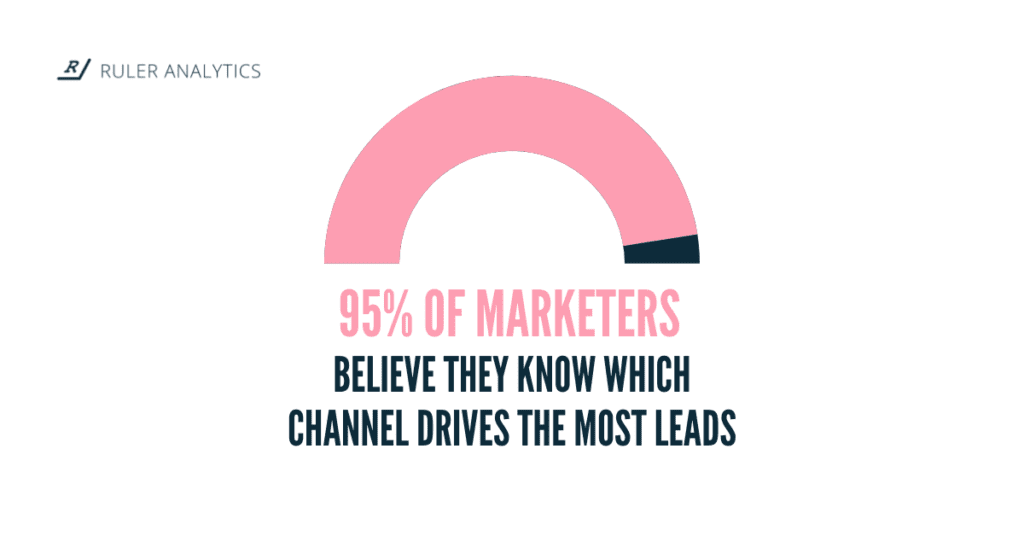
According to our marketers, 27% attributed the majority of their leads to organic search. This correlates with what we found in our analysis of millions of data points in our archive. Download our conversion benchmark report here for the rest of the statistics.
Organic search is vital for driving traffic, as well as for driving leads.
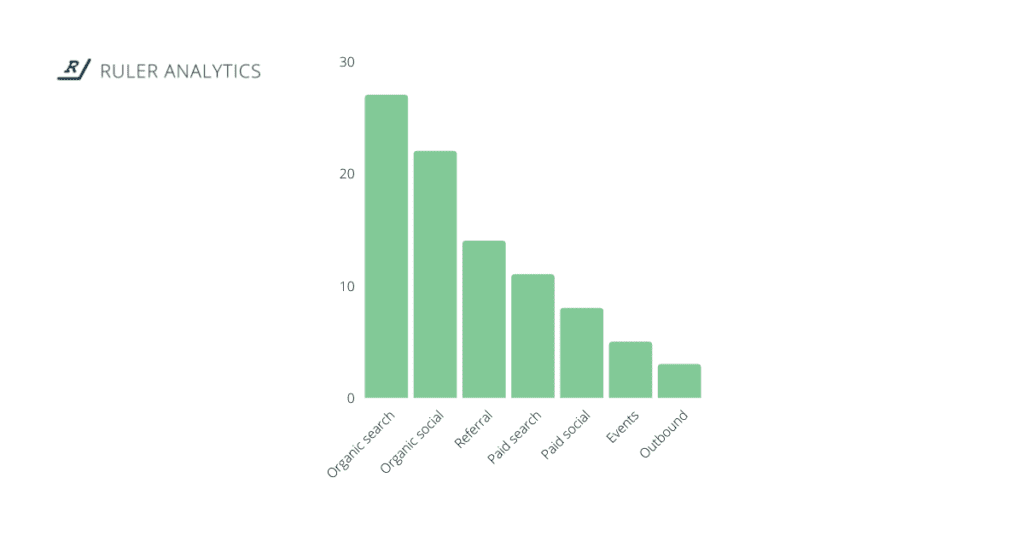
The next most attributed channel was organic social. There’s no doubting that social media is dominating the space at the moment.
With new channels like TikTok growing and overtaking industry giants, marketers need to be flexible. Being found on the right channel, at the right time, is key to driving eyes to your site. And from there, driving new leads.
For B2B marketers, it can be hard to decide which social platform to concentrate efforts on. However, according to a study, 80% of B2B leads come from LinkedIn.
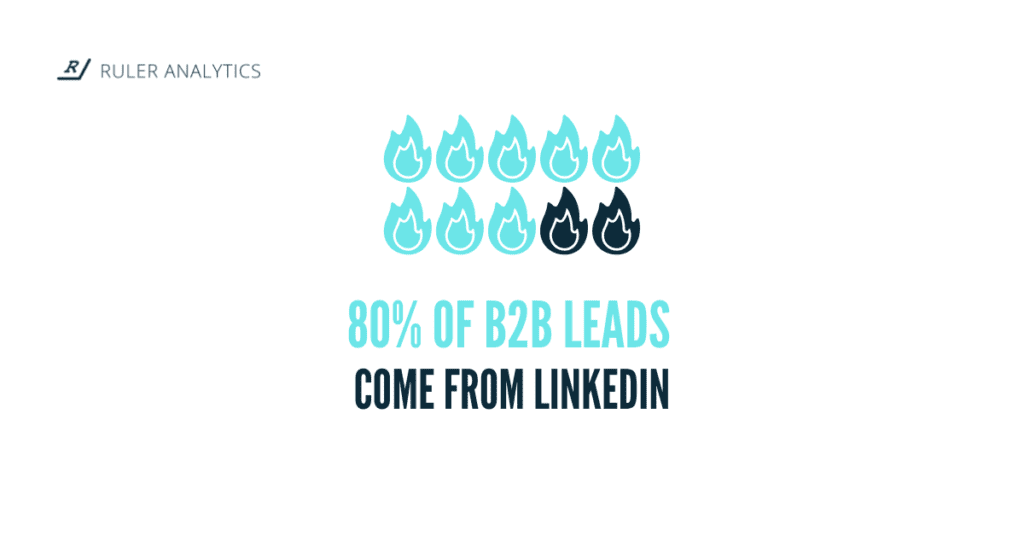
And it makes sense. LinkedIn is essentially a giant directory for business professionals. It makes it the perfect digital hangout for a B2B company or marketer. (Source: Oktokpost)
Another big channel for B2B marketers was referral channels. Think listings and directories. Places like G2 and Capterra are an absolute must for those in the SaaS space for example.
Providing social proof is a sure-fire way of generating quality leads. So, start collecting reviews from happy customers on key websites, so you can start driving new traffic and leads directly to your website.
Competition is tough at the moment. Lead generation has always been a hard job, but that’s grown ten-fold in the last year. So it’s no surprise that marketers are moving to paid channels and relying on them to drive traffic and leads. But more importantly, it’s working!
11% of marketers said the majority of their leads came from paid channels.
Marketers are up against it. There are data discrepancies to contend with, high competition across paid and so much more. But when we asked 200 marketers what their biggest challenge was, generating high-quality leads came out top.
And we’re not surprised.
Most lead data is disconnected. So your website interaction history of leads is disconnected from a new lead that comes through via call, form or live chat. And then that is disconnected from closed revenue. It makes it very difficult for marketers to prove their return on investment.
(Source: Ruler Analytics)
Why are marketers struggling to track offline conversions? Well, with users converting via methods like phone calls, live chat and forms, it can be tricky to link your online lead to an offline sale.
(Source: Ruler Analytics)
This isn’t surprising. If you can’t track the quality of your leads, then you’re also going to struggle to track your ROI as any return on investment you do calculate will be inaccurate.
(Source: Ruler Analytics)
Related: Learn how to track your marketing leads effectively.
Lead generation isn’t created equal. It’s massively dependent on your chosen industry. We recently analysed millions of data points across our clients to find key conversion data and insights.
We found key conversion rates across sectors including B2B tech, healthcare and real estate. (Source: Ruler Analytics)
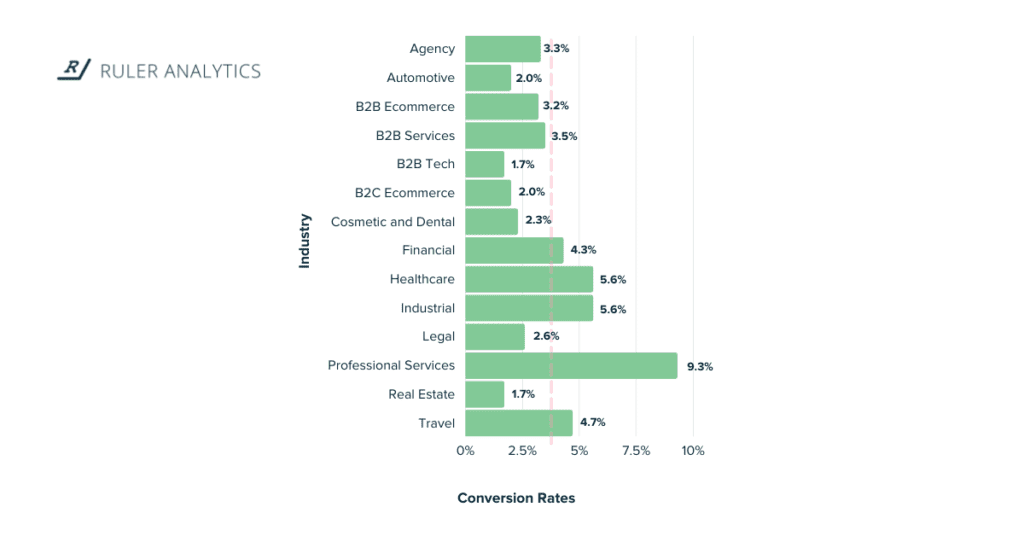
👉 Download the full report here.
Understanding conversion rate benchmarks within your industry is vital as it can help you know where you need to improve or if you’re ahead of your competitors.
Remember, we compiled individual reports for each industry, so be sure to take a look at them.
And there you have it. Some key lead generation statistics that might be helpful to you and your team.
Remember, lead generation isn’t a one-size-fits-all approach. To ensure success, you need to prove what works, and then drive more of it.
Learn how marketing attribution can help you optimise your marketing strategy, evidence what’s working and ultimately, drive more sales.